How to Position Your Greenhouse for Maximum Sunlight
Sunlight is the single most important factor when it comes to greenhouse gardening. Without enough of it, even the best-built structure won’t deliver the results you’re hoping for. From seedling success to crop yield and plant health, how and where you position your greenhouse can make or break your growing efforts.
In the UK — where light levels can be unpredictable, especially in autumn and winter — cFhoosing the right location and orientation for your greenhouse is essential. A well-placed greenhouse will capture the most available sunlight, maintain better temperatures, and support healthy, vigorous plant growth all year round.
In this guide, we’ll walk you through everything you need to know about how to position your greenhouse for maximum sunlight. Whether you’re installing a freestanding model, a lean-to, or working with limited garden space, these tips will help you get the very best from your greenhouse.
Understanding the Role of Sunlight in a Greenhouse
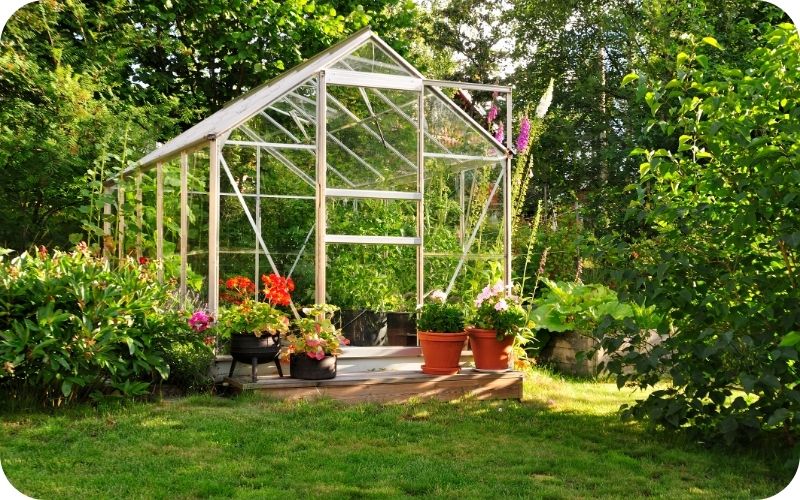
At its core, a greenhouse is designed to trap sunlight and convert it into warmth — creating a sheltered, stable environment where plants can grow, even when outdoor conditions are less than ideal. That means sunlight isn’t just helpful — it’s absolutely essential.
Here’s why it matters so much.
Sunlight Fuels Photosynthesis
Plants rely on sunlight to perform photosynthesis — the process by which they convert light energy into the fuel they need to grow. Without enough sunlight, seedlings can become leggy, slow to develop, and more prone to disease.
For greenhouse gardening, consistent access to natural light is what makes early sowing, late harvesting, and overwintering even possible. Whether you’re growing vegetables, herbs, or ornamentals, sunlight is the key ingredient that helps plants thrive.
Light = Warmth and Climate Control
Sunlight doesn’t just help your plants grow — it also warms the interior of your greenhouse. The glazing traps heat from the sun, raising the internal temperature and allowing you to grow crops that wouldn’t normally survive outdoors in cooler months.
A poorly positioned greenhouse — one that’s shaded for large portions of the day — won’t hold heat well, especially during the colder parts of the year. This can lead to:
- Slower plant growth
- Lower yields
- Greater reliance on artificial heating
Positioning your greenhouse correctly allows you to make the most of natural solar energy — keeping your running costs down while giving your plants the best chance to succeed.
What Is the Best Orientation for a Greenhouse in the UK?
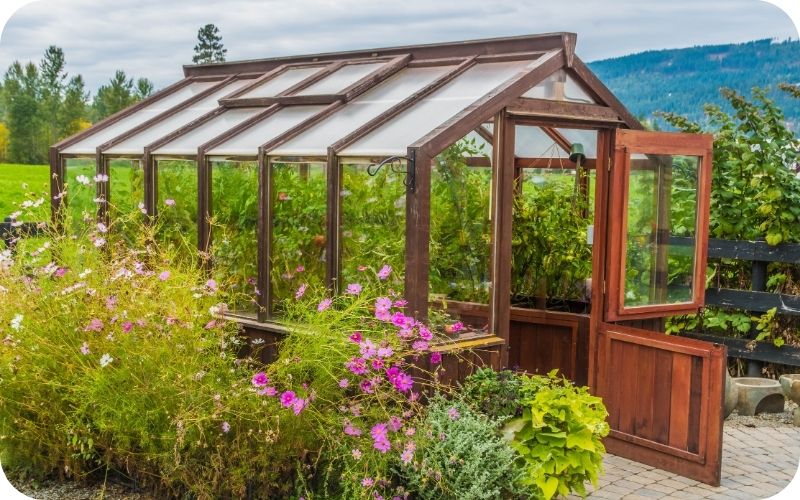
When we talk about greenhouse orientation, we’re referring to the direction the ridge (or longest side) of the structure runs in relation to the sun. This plays a huge role in how much light your plants receive throughout the day — and throughout the year.
In the UK, where daylight hours and sun angles vary dramatically between summer and winter, getting this right can significantly improve growing conditions.
East–West Orientation: Ideal for Year-Round Growing
For most gardens in the UK, the best orientation is to position your greenhouse with the ridge running east to west. This setup ensures the longest side of the structure receives the most consistent sunlight throughout the day, especially during winter when the sun is lower in the sky.
An east–west orientation:
- Captures maximum winter sunlight (vital for overwintering and early sowing)
- Helps maintain a more stable internal temperature
- Reduces cold, dark corners within the greenhouse
This is particularly beneficial if you’re planning to use your greenhouse year-round.
North–South Orientation: Still a Solid Choice in Summer
In some gardens — particularly long, narrow spaces — a north–south orientation might be more practical. While this means each side of the greenhouse gets a shorter period of direct sunlight each day, it allows for even light distribution across both sides of the structure during summer.
This can help prevent overheating or uneven plant growth, particularly in peak growing months.
Quick Tip: Base Orientation on Use and Season
- If you’re planning to grow in autumn and winter, or want a truly year-round setup, aim for an east–west ridge line.
- If your use is mainly spring and summer, and you have limited space, north–south can still work well.
Ideal Greenhouse Placement in Your Garden
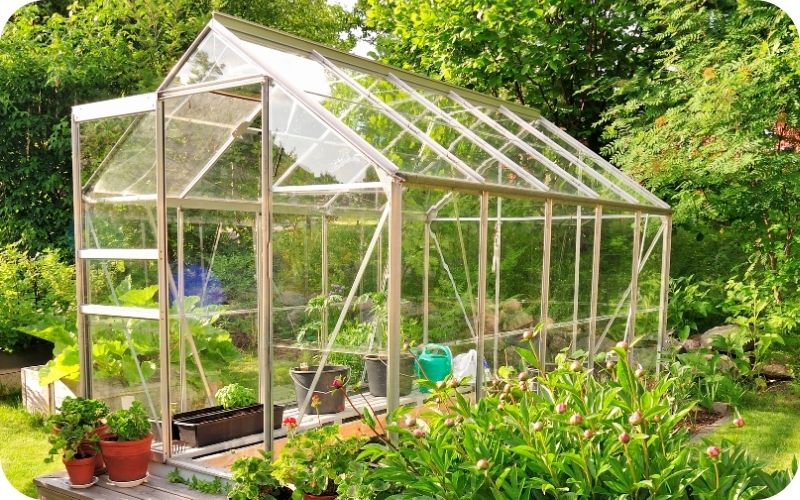
Once you’ve decided on the best orientation, it’s time to choose the exact spot in your garden. The goal is to find a location that offers maximum sunlight exposure, minimal shade, and practical access — all while working with the layout of your outdoor space.
Here’s how to get it right.
1. Choose the Sunniest Spot
The best location for your greenhouse is where it will receive the most uninterrupted sunlight throughout the day — especially during the colder months, when the sun sits lower in the sky and daylight hours are limited.
Ideally, this means:
- Full sun from mid-morning to late afternoon
- Avoiding areas that stay shaded until late in the day
- Prioritising autumn, winter, and early spring sun, when light is most limited
Spend a few days observing your garden at different times to spot patterns — even a small patch of shade can make a big difference.
2. Avoiding Shade
Trees, tall fences, sheds, and neighbouring buildings are common culprits when it comes to casting shade. Even deciduous trees that lose their leaves in winter can reduce light levels and drop debris onto your greenhouse roof.
Try to:
- Leave at least 1–2 metres clearance between your greenhouse and tall structures
- Avoid placing it in the shadow of a house or wall, especially in the afternoon
- Be mindful of how the sun moves across your garden throughout the seasons
If unavoidable, it’s better for your greenhouse to receive morning sun and afternoon shade than the other way around.
3. Allowing for Good Airflow
While sunlight is a top priority, your greenhouse also needs room to breathe. Placing it too close to a fence or wall can limit air circulation, which increases the risk of damp, mildew, and temperature spikes.
Ideally, leave space around the entire structure to:
- Promote natural airflow
- Allow access for cleaning and maintenance
- Reduce humidity build-up in warmer months
Consider Surroundings and Access
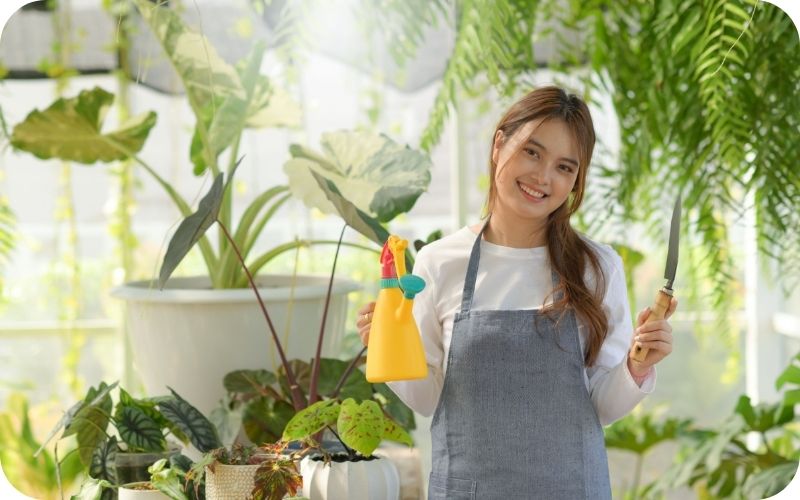
Choosing the sunniest spot is essential, but it's also important to think about how your greenhouse fits into your everyday routine. Good access and thoughtful positioning can make your gardening more efficient, more enjoyable, and more successful.
Keep It Close to Home
Positioning your greenhouse near the house (if possible) has several benefits:
- Easier access for regular watering, especially in winter or wet weather
- Quicker trips with tools, trays, or harvested crops
- More likely to be used regularly if it’s in sight and easy to reach
If your greenhouse is tucked away at the far end of the garden, it may become neglected during colder months — just when your plants need the most attention.
Proximity to Utilities
If you’re planning to use electric heaters, grow lights, or automatic ventilation, placing your greenhouse close to a power source can make installation much simpler and cheaper.
Likewise, having a nearby water supply — or the ability to connect water butts to your greenhouse gutters — makes regular watering far less of a chore.
Think About Drainage
Avoid positioning your greenhouse in a low-lying or boggy area, as water can collect around the base and seep inside. A gentle slope is fine as long as the ground is levelled before installation, but avoid spots where puddles tend to gather after rain.
Good drainage protects your greenhouse structure, reduces internal humidity, and prevents rotting or mould around staging and storage areas.
Allow for Paths and Maintenance Space
Leave at least 50cm to 1m of space around the outside of your greenhouse where possible. This makes it easier to:
- Clean glazing and guttering
- Access panels and vents
- Carry out repairs and seasonal maintenance
- Avoid plants or weeds encroaching from surrounding beds
Adding a simple path or stepping stones from your house or shed to the greenhouse also keeps things clean and safe, especially during the winter months.
Special Considerations for Lean-To Greenhouses
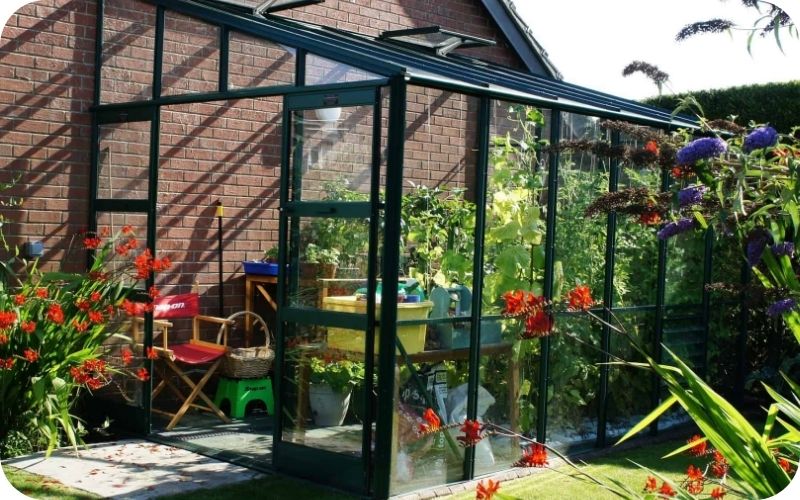
Lean-to greenhouses are a fantastic space-saving option — especially in smaller gardens, on patios, or against garages and outbuildings. But because they rely on an existing wall for support, their positioning needs a bit more thought to make sure they perform as well as freestanding models.
Make the Most of a South-Facing Wall
In the UK, the best wall for a lean-to greenhouse is one that faces south or south-east. This allows the structure to receive the most consistent sunlight throughout the day, particularly during the crucial growing months of early spring and late autumn.
If a true south-facing wall isn’t available, an east-facing wall can still work — it will catch the morning sun, which is especially helpful for warming the greenhouse up after a cold night.
Avoid placing a lean-to on north-facing walls, as these tend to remain shaded for most of the day, limiting both light and heat.
Watch for Building Shadow
Even if the wall itself faces the right direction, surrounding features like eaves, guttering, and overhangs can cast shade over the greenhouse below — especially in winter when the sun is lower in the sky.
To get the best results:
- Choose a taller lean-to to catch more light
- Keep the area around the structure clear of clutter or tall plants
- Use light-coloured walls or reflective surfaces to bounce more light inside
Don’t Forget Ventilation
Because one side of a lean-to greenhouse is completely enclosed, airflow can be more restricted than in a freestanding model. Make sure your lean-to includes:
- At least one roof vent
- A louvre vent or openable window on the exposed side
- Easy access to open doors during hot spells
Good ventilation prevents overheating, discourages pests and mould, and helps regulate humidity levels throughout the year.
Mistakes to Avoid When Positioning a Greenhouse
Getting your greenhouse in the right spot from the start will save you time, money, and frustration later on. Here are some of the most common positioning mistakes — and how to avoid them.
1. Placing It in the Shade
It sounds obvious, but it’s surprisingly easy to misjudge how much shade falls on a spot throughout the day — especially as trees and hedges grow over time. A greenhouse in partial shade may never reach ideal temperatures, especially in spring and autumn.
✅ Fix: Track the sun’s path throughout the day before choosing your location. Use apps or garden sun trackers if needed.
2. Facing the Wrong Direction
While any sunlight is better than none, poor orientation can result in uneven light, cold spots, and underperforming plants.
✅ Fix: Aim for an east–west ridge line to maximise winter sun, or north–south if your main use is summer growing and space is limited.
3. Ignoring Winter Sun Angles
In summer, the sun is high and forgiving. In winter, it stays lower on the horizon — and even small obstructions can cast long shadows.
✅ Fix: Plan your layout with winter light in mind, not just summer conditions.
4. Blocking Doors or Vents
Your greenhouse might look perfect in a tucked-away spot — until you realise the door can’t open fully, or vents are too close to a wall to function properly.
✅ Fix: Leave clear space for entry, ventilation, and maintenance access on all sides.
5. Overlooking Uneven or Poor Drainage Ground
A greenhouse on sloping or soggy ground can lead to structural stress, waterlogging, and difficulty installing staging or shelves.
✅ Fix: Choose flat, well-drained ground and use a suitable base like paving slabs or treated timber to create a level foundation.
Avoiding these common missteps means your greenhouse will not only look great — it’ll also perform exactly as it should.
Tips for Getting the Most Out of Limited Space
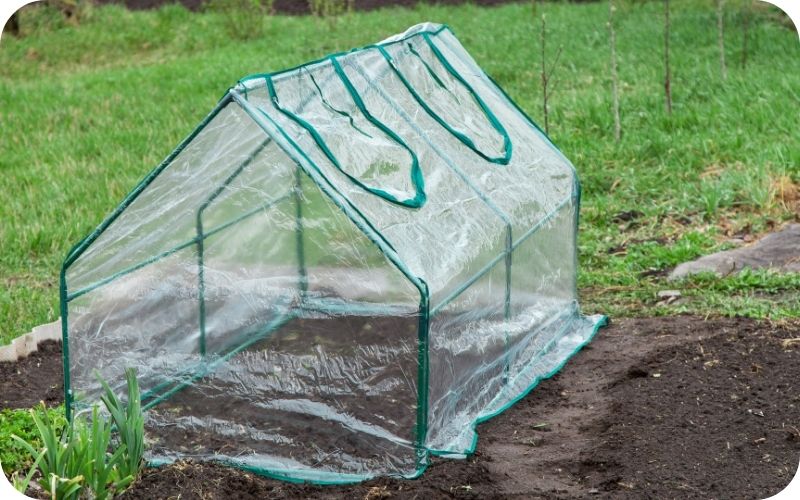
Not everyone has a large, south-facing garden — but that doesn’t mean you can’t enjoy the benefits of a well-positioned greenhouse. With a bit of creativity and smart planning, you can maximise sunlight and growing potential even in compact outdoor areas.
Choose the Brightest Corner You’ve Got
In small gardens or courtyards, you may only have one viable spot — so make sure it’s the sunniest and most open area available. Even a few extra hours of morning sun can make a noticeable difference to plant health.
If you're working with a patio or terrace, consider placing your greenhouse:
- Against a south- or east-facing wall
- Where it’s not overshadowed by nearby fencing or sheds
Near reflective surfaces (light-coloured walls or gravel) to boost brightness
Go Vertical with Staging and Shelving
If floor space is tight, vertical growing is your friend. Use staging, tiered shelving, or hanging planters inside your greenhouse to grow more without taking up extra room.
Tip: Tall crops like tomatoes or cucumbers can be trained upwards using supports or strings fixed to the roof frame.
Use Compact or Lean-To Models
Mini greenhouses, cold frames, or lean-to greenhouses are ideal for tight spaces. They offer great heat retention and light access while hugging walls or slotting into unused corners. Some even come with sliding doors to save space.
Look for models with:
- Twin-wall polycarbonate (for better insulation)
- Roof vents or louvre panels for airflow
- Narrow widths but generous height for vertical growth
Add Light with Reflective Materials
If light levels are less than ideal, you can give nature a helping hand. Use:
- White or reflective surfaces (walls, paint, tiles)
- Mylar sheets or mirror panels fixed behind shelves
- Light gravel or paving to reflect sunlight upwards
These simple tricks can increase light exposure without moving your greenhouse.
Even with limited room, it’s possible to enjoy a productive greenhouse setup — and proper positioning ensures you get the absolute most out of the space you have.
Final Thoughts
The success of your greenhouse starts before the first seed is sown — it begins with where and how you position it. Maximising sunlight isn’t just about plant health; it affects everything from temperature stability to harvest yields and heating costs.
In the UK, where light levels can vary greatly throughout the year, a well-positioned greenhouse will make all the difference — especially if you’re aiming for year-round growing. Whether you have a large open garden or a compact patio, smart placement can help you get the most out of your space and enjoy better results from the start.
If you’re ready to put your plans into action, we’re here to help. At GardenFurnitureSets.co.uk, we stock a range of polycarbonate greenhouses in sizes and styles to suit all gardens — from full-size walk-ins to compact lean-tos perfect for smaller spaces.
👉 Browse our full range of greenhouses and find the right fit for your sunniest spot.




